Re-contouring as an efficient solution to poor aesthetics on a single tooth
Featured Products Promotional FeaturesPosted by: Dental Design 23rd June 2020

Shahram Mirtorabi is the principal dentist at Hindley Dental Practice, Wigan. Following his graduation from the University of Manchester Dental Hospital, he worked
in a number of practices before establishing Hindley in 2002. Shaz is passionate about all aspects of dentistry and is a member of the British Academy of Cosmetic Dentistry (BACD). He is also experienced in and lectures on implantology. Here, he presents a restorative case where a patient wanted to improve the aesthetics of a single tooth.
Case presentation
My patient was a 36-year-old female who attended the practice complaining of the appearance of her UL1. She was medically fit and well and explained that she had sustained trauma to her front tooth as a teenager and had repeatedly received direct restorations. She subsequently had a porcelain veneer fitted a few years ago, but had never been satisfied with the appearance of it and was now seeking a better aesthetic (see Figures 1 and 2).
On examination it was noted that her general dental health was good with healthy periodontal tissues, although there was hint of some recession around the labial aspect of the UL1, as shown in Figure 3. On radiographic examination, the UL1 had a sound orthograde root filling with no associated pathology.
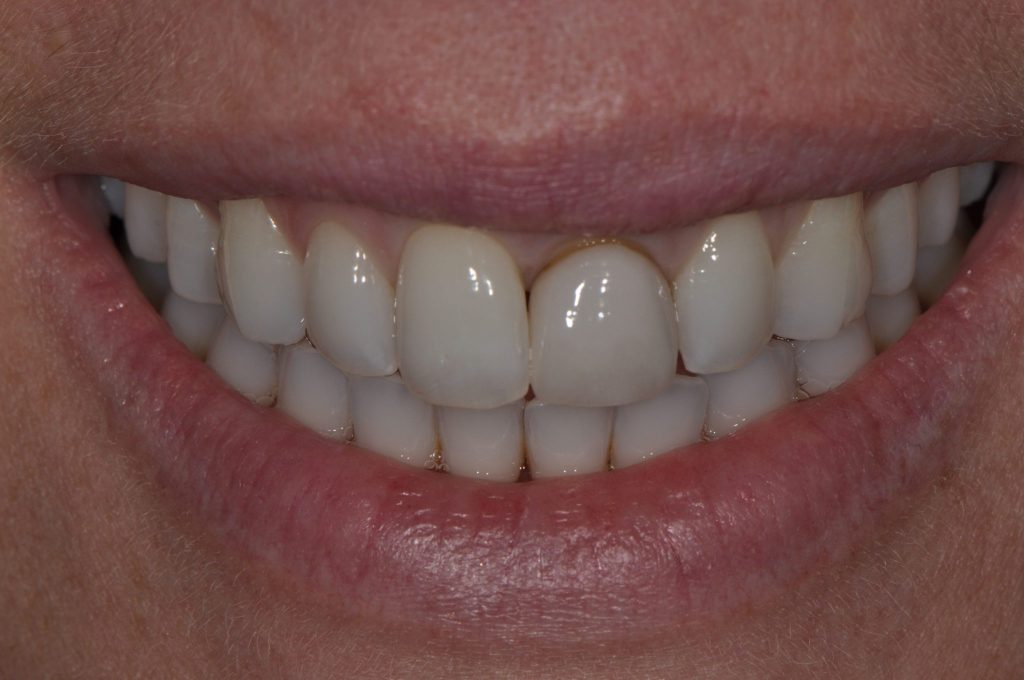
Fig.1
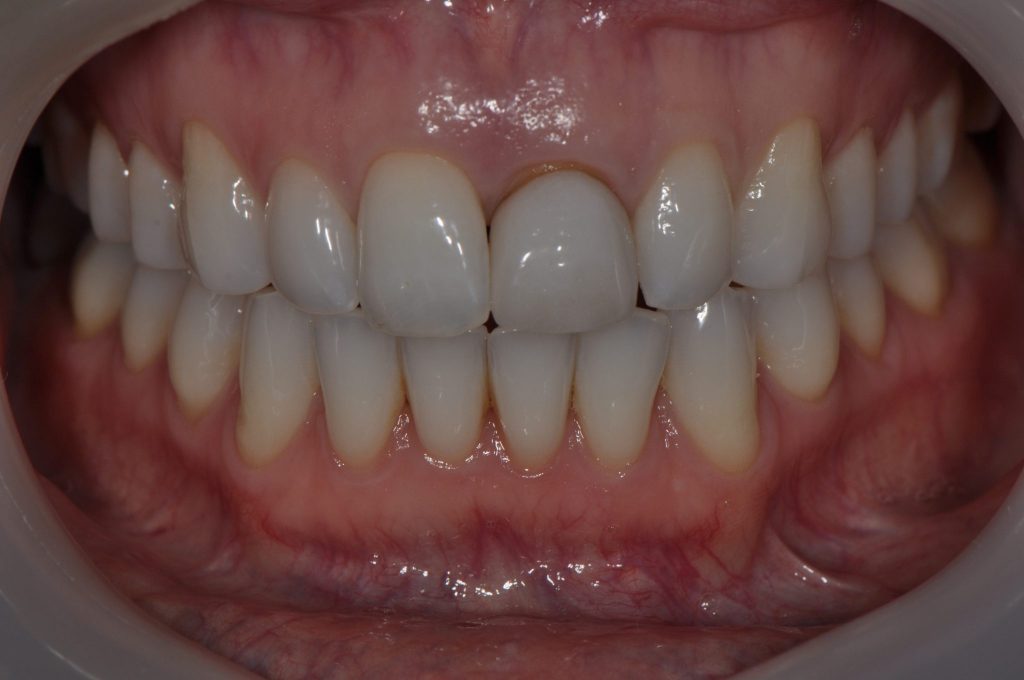
Fig. 2
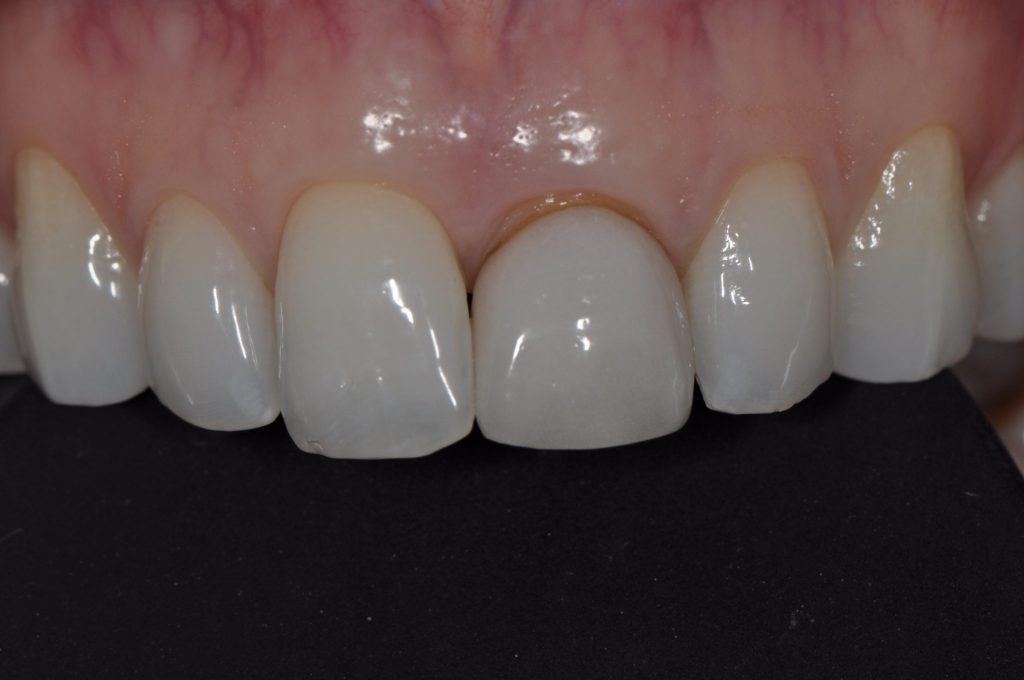
Fig. 3
Treatment options
The aim of the treatment was to achieve a symmetrical harmony of the central incisors by balancing the soft and hard tissues. This could be ideally achieved with tooth alignment, using short term orthodontics, but the patient was not willing to undergo any form of orthodontics. The alternative option was to recontour the gingivae around the UL1 to achieve a symmetrical zenith, and accept that it will be slightly wider. Furthermore, we discussed the possible whitening of her upper and lower teeth prior to the restorative stage involving an indirect restoration such as a veneer or crown to the UL1.
Discussing the possible treatment options and related costs with patients is often onerous, but it’s essential to obtain valid consent from them. This important step helps to avoid any confusion, misunderstandings and possible complaints at a later stage. In this particular case, the patient agreed to phase the treatment, dealing with the soft tissues by firstly contouring the gingivae and then address the restorative phase later.
The asymmetry of gingival zenith was rectified by using COLTENE’s PerFect™ TCS ll, as it is effective and precise with no bleeding and fast healing, as shown in Figure 4. Once we were both happy with the symmetry of the gingivae, the defect was restored with COLTENE’s BRILLIANT EverGlow™ shade A2 (see Figure 5, also Figure 6 to see the balancing pink and white and Figure 7 for the patient’s smile following the first stage of treatment).
After a few weeks, soft tissue stability was achieved and the restorative options were discussed and offered to the patient. Firstly, we had to decide whether to proceed to replace the veneer, or opt for a crown. Once we had decided to go ahead with the full coverage crown, we considered different materials and finally decided on an all-ceramic e.max crown. The crown was cemented using COLTENE DuoCem™, as it is my preferred and trusted cement due to its versatility with excellent technical properties and easy handling (see Figure 8). DuoCem™ is a dual curing resin cement in 5ml automix syringes, available in Dentin Trans and White Opaque, allowing me to determine the final shade of the restoration. In this case, I used shade Dentine Trans (see Figure 9). The final smile can be seen in Figure 10.
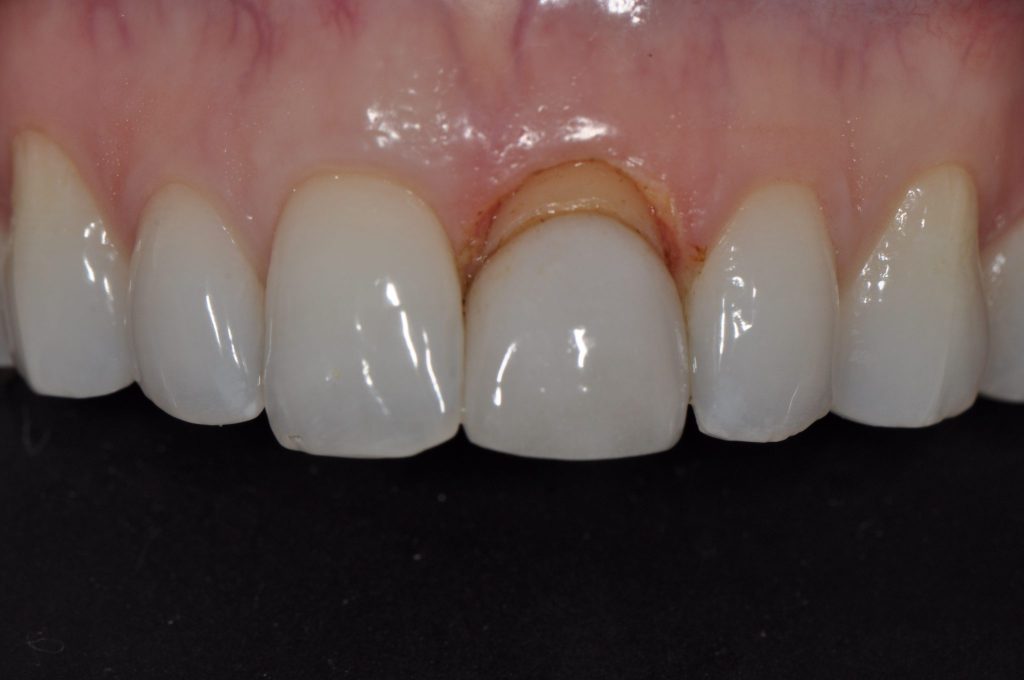
Fig. 4
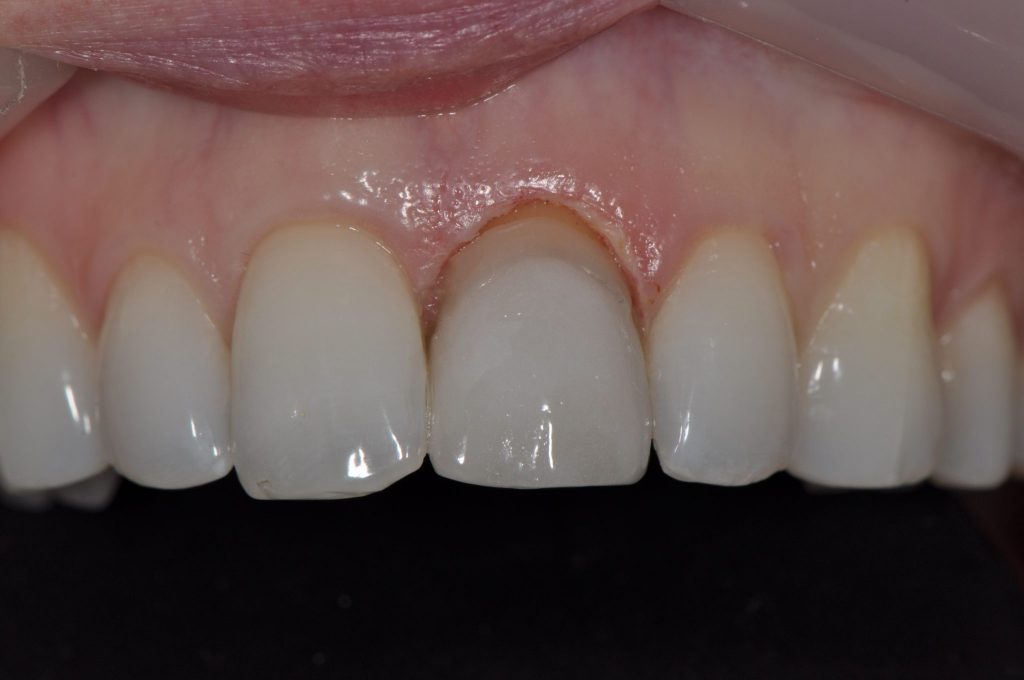
Fig.5
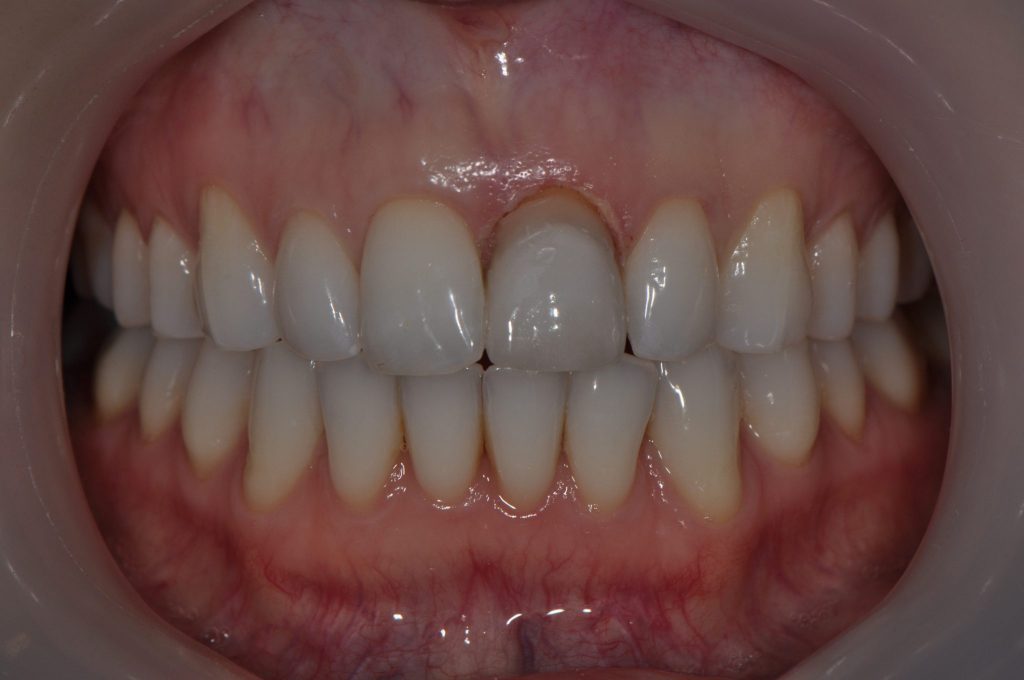
Fig. 6
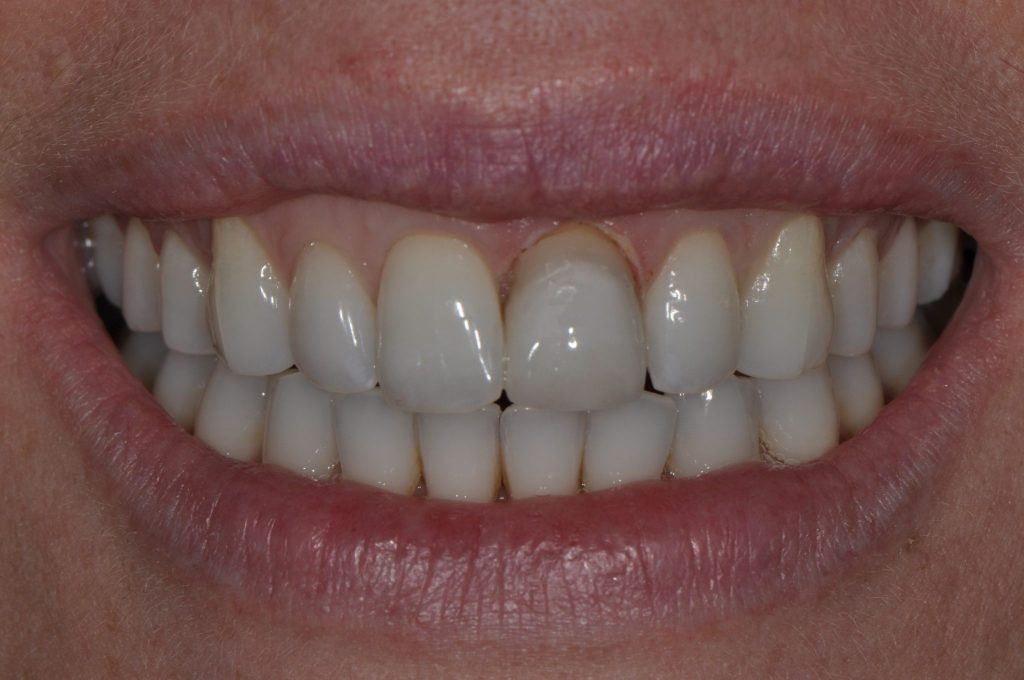
Fig. 7
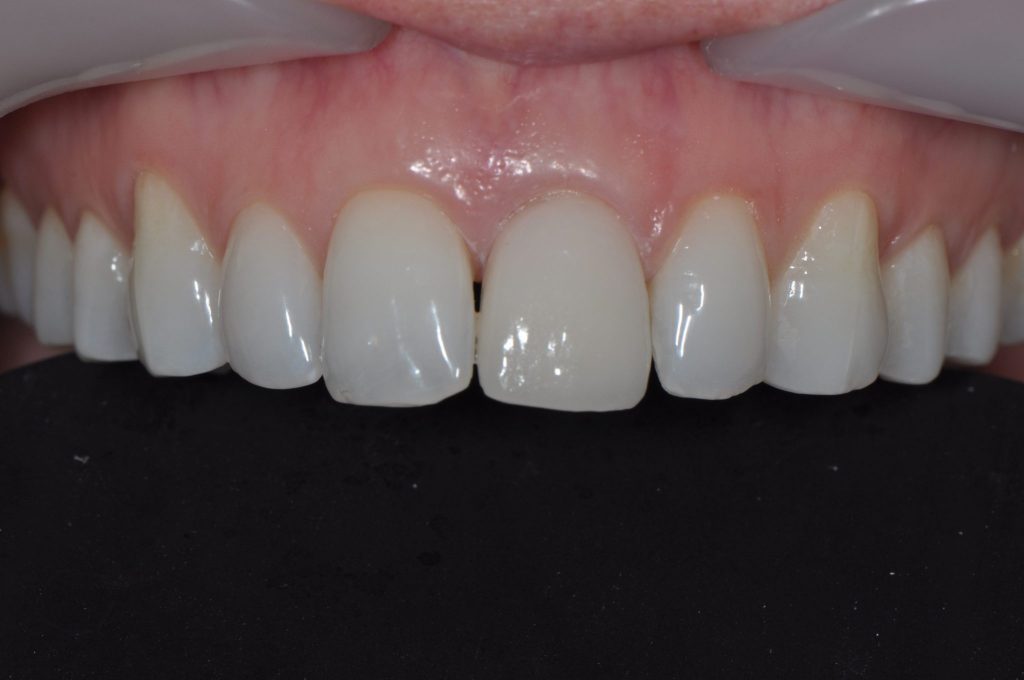
Fig. 8
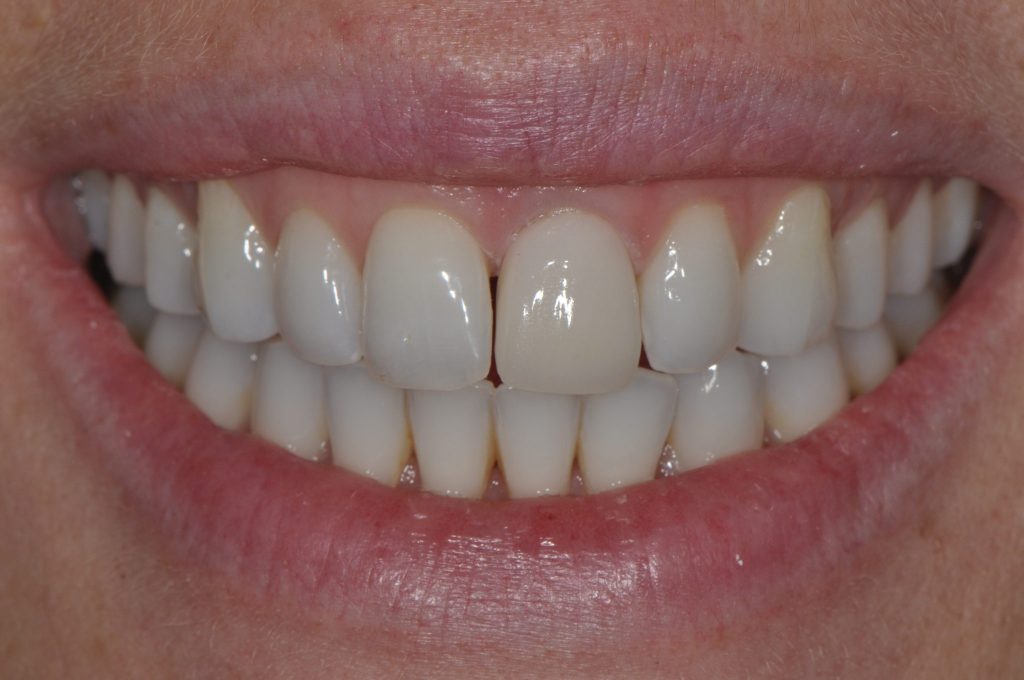
Fig. 9
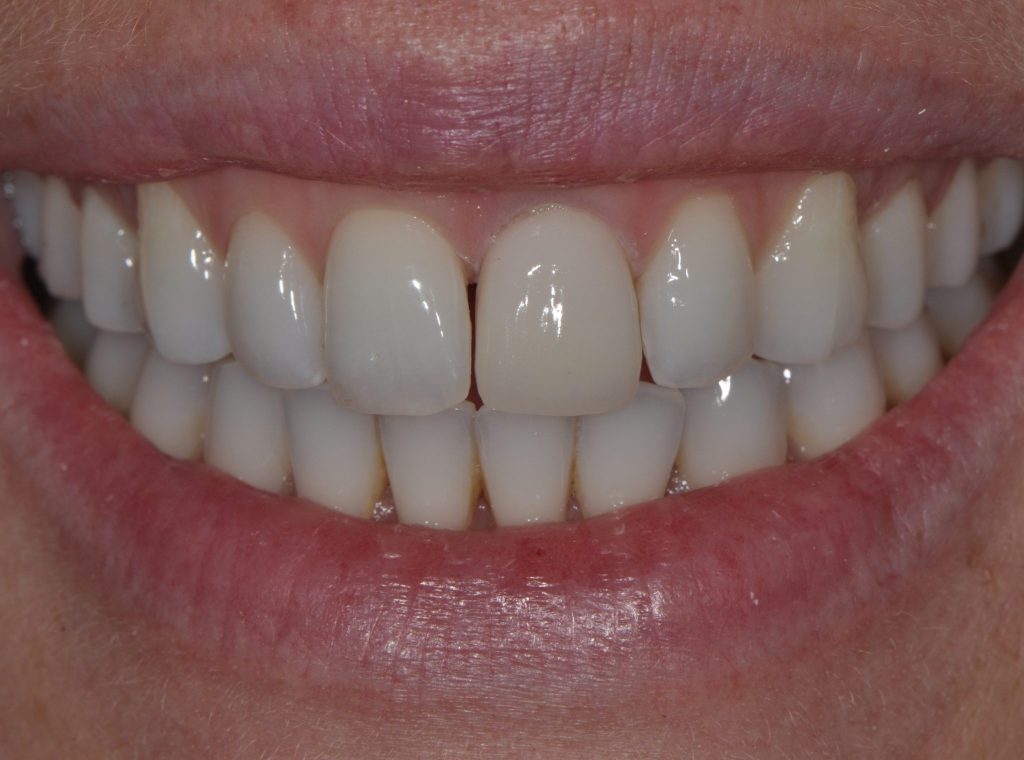
Fig. 10
Discussion
This case demonstrates the importance of communication between clinician and patient and highlights the need to involve both parties in the decision-making and treatment planning processes. To obtain the patients’ valid consent is the duty of the clinician, who must also inform and advise the patient of the possibilities and consequences of their decisions. As clinicians we need, therefore, to have access to a variety of equipment and materials which enable us to deliver the best dentistry and address our patients’ needs. In my daily practice, the trusted COLTENE products I use provide me with the platform to consistently achieve these goals and thus give my patients the very best treatment possible.
To find out more visit www.coltene.com,
email info.uk@coltene.com or call 01444 235486.









